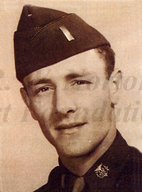
|

|
|
|
|
Roy was born in Shreveport at the Schumpert Sanitarium to George Roy Hayes, Sr. and Florence Hazel Row Hayes. His father was assistant superintendent of Shreveport-El Dorado Pipeline Company. Roy finished Byrd High School at sixteen in 1937, and worked for Atlas Refinery as gate man and timekeeper for employees. Moving to Champaign, Illinois, he lived with his aunt, Grace Butler, while he attended the University of Illinois, and worked part-time for her automobile parts business. George finished his undergraduate work at Louisiana Tech where he was offered a job teaching biology laboratory, with room, board, and laundry paid. In April of 1942 he joined the U.S. Public Health Service to develop malaria control programs in extra cantonment areas. "Many of the troops coming to the South were from the northern states, and never had any exposure to malaria or other tropical or sub-tropical diseases," he explains. While involved in that work, he met Marie St. John in Minden, and they married in July of 1943. Roy was given a military rank as a commissioned officer and a public health official, and was sent to the West Indies, where he also worked to control malaria. Much of his work was in spraying with DDT, a pesticide that he says "had such a bad name, but is really probably the best thing that happened to us maybe in the century. It wouldn't degrade for several weeks. It had a long residual," he says. He was stationed at Fort Simon (later Vernon) in Jamaica, part of the British West Indies, where he needed, but could never obtain, a microscope. "German subs sitting in the mouth of the Mississippi sank the first two ships that came bearing microscopes," he says. He did have a radio, and was able to receive KWKH from Shreveport. "My sister would call up and dedicate Perry Como songs to us," he recalls. Roy was later sent to the Pacific for similar work. After the war he went to Arkansas as part of the program, Malaria Control in War Areas (MCWA), the predecessor for the Center for Disease Control. "It was by virtue of that that I am a charter member of the Center for Disease Control in Atlanta," he remarks. Roy earned his masters degree at the University of Arkansas. He later worked in several states and in Guam, remaining with the U.S. Public Health Service for "twenty-nine years, six months, and one day," he says. |


